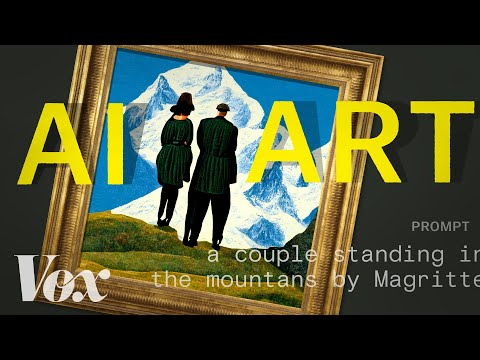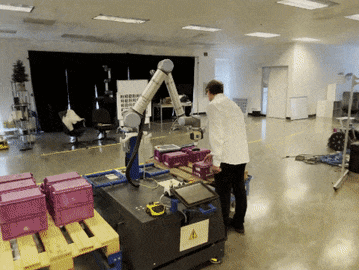Introduction
Mention art and many people’s imagination will drift toward easels, acrylic paints, or perhaps a music performance. Artificial intelligence (AI) and machine learning (ML) would probably not be the first thoughts in most people’s minds. But digital technology has influenced art and artists for decades.
Artificial intelligence is making its way into the art world, with AI-generated art pieces being sold for thousands of dollars at galleries and auctions. There’s even an instance of an AI winning first place in the Colorado Fine Arts Exhibition, essentially beating human artists. So, what exactly is AI art, and how does it work?
So, it was only a question of time until AI made its debut in the art world. Today, artists have a wide range of AI art generators at their disposal to help take their work to another level. Here is an overview of the leading products.
AI art Generator
Usually, in order to implement creative AI art generators, developers use AI-powered algorithms known as generative adversarial networks (GANS). Computer scientist, Ian Goodfellow, pioneered the concept of adversarial algorithms in 2014. They have two sides (thus the term “adversarial”) – one creates random images and the other uses machine learning to figure out which images are the best fit with the data.
Also Read: Redefining Art with Generative AI
What Are AI Art Generators?
AI art, also known as algorithmic or computer-generated art, utilizes artificial intelligence and machine learning models to create unique pieces of artwork. The process involves feeding user input into a program or algorithm, producing a visual output based on the information given.
Different tools offer a variety of options for creating AI art, making it accessible to both experienced digital artists and beginners. Some AI art generator projects allow users to manipulate the output by choosing colors, shapes, and styles. Others offer a completely random and unique experience by generating entirely new pieces without any input from the user.
Source: YouTube
Starry AI
Starry AI transforms words into art. Creators do not need any technical expertise or experience with this app. They simply tell the app what they are imagining, and Starry AI is turning it into a work of art.
Users can choose between different styles, aspect ratios, and models to tailor their creations. Plus, having full ownership of the creations makes them perfect for upcoming art projects and other uses. Up to five artworks are free of charge daily and can be downloaded without watermarks.
Craiyon, formerly Dall E mini
Dall E mini has gone through a name change and is now known as craiyon. The name aptly describes what the app does – craiyon draws images from text prompts. It is free to use, and creations can be printed on t-shirts, for example.
Craiyon is currently only available for Android devices, but development is ongoing for an iOS version. Its creators recommend using specific word prompts for better results. Users may also want to experiment with their requests to see what the AI can generate.
Source: YouTube
Dream by Wombo
If you can imagine it, Dream can create it. Using this app is simple: all creators need to do is supply a prompt and choose their favorite style. Within seconds, Dream by Wombo delivers an artwork. A growing community of artists is already taking advantage of this technology, and that community’s work can be an excellent source of inspiration for any budding AI artist.
Source: YouTube
Fotor
Fotor is an image-editing software that also offers AI art generation. Within a few clicks, users can upload their favorite images into masterpieces. The transformation is instant, and users have a wide choice of filters to apply to their work.
Think of it this way: you may have taken a rather average picture. Fotor turns it into an oil painting, a cartoon, or a watercolor. Editing tools allow users to put a more personal touch on their creations, too.
Hotpot AI
If your marketing needs a boost, Hotpot AI might be just what you have been looking for. This tool lets users create professional-quality graphics and pictures in a few simple steps. Its handy templates have made it a favorite with professional graphic designers as well as consumers.
What can you create? Anything from social media posts to marketing images, icons, and other artwork. Hotpot AI can help restore damaged images, remove backgrounds, and enhance faces, without any tech skills.
Deep AI
Deep AI was created to support creatives. This may sound like a pun, but it represents the intention of the programmers behind this AI. Deep AI images are created from a text description, and the software delivers a unique image every time you use it.
Deep AI works great for anyone wanting to generate AI art or just have a play with the technology to see in which direction AI-powered artwork is heading.
VQGAN+CLIP
The digital art world moves fast, and few days pass by without new discoveries and tools being launched. VQAN+CLIP became a game-changer when it appeared on the scene in 2021. Until then, text-to-image art generation had existed but never really excited artists like the brains behind Night Café.
VQAN+CLIP broke the mold and has since been adopted by other developers. The software is a favorite of the Night Café creators, for example.
Source: YouTube
Deep Dream Generator
Collaboration lies at the heart of Deep Dream Generator. The application’s goal is to encourage humans to collaborate with tools enabled by artificial intelligence to create outstanding visual content free of charge.
Users can start with a text prompt or combine it with a base image. Either one is now being interpreted by a technology known as deep style that has surpassed the results of the original deep dream approach. Deep Dream Generator was invented to help scientists see what deep neural networks were seeing when they are looking at an image. It is now free to use for anyone.
Source: YouTube
3d AI Generator
Nvidia has released its instant NeRF software a 3d AI generator, which utilizes GPU hardware to perform complex calculations. A model can now be created in seconds instead of days! In terms of speed and usability, NVIDIA makes a lot of exciting claims about instant-ngp.
NeRF image NVIDIA has made of a cool robotics lab. Gif by https://github.com/NVlabs/instant-ngp





